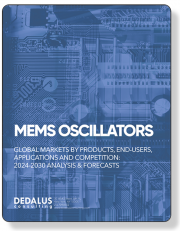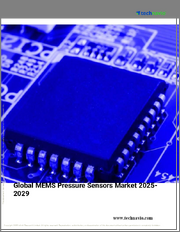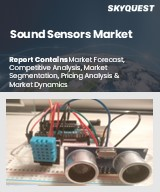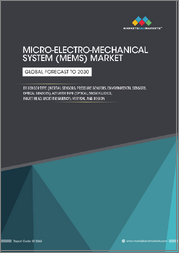
|
시장보고서
상품코드
1650828
세계의 압전 MEMS 시장(2025-2035년)Global PiezoMEMS Market 2025-2035 |
||||||
압전 마이크로 전기기계 센서 및 액추에이터는 다양한 응용 분야에서 사용되고 있습니다. 기존의 정전 용량 MEMS와 비교하여 압전 MEMS는 우수한 성능과 제조 효율을 제공합니다. 압전 박막, 특히 PZT는 마이크 및 마이크로 미러, 가스 센서, 이미지 안정기, 초음파 트랜스듀서, 우수한 인쇄 결과를 제공하는 피에조 프린터, AR 글래스, 통신 강화용 RF 필터 등 고성장 MEMS 제품의 새로운 기초를 형성하고 있습니다.
압전 MEMS 부문은 광범위한 MEMS 산업에서 큰 비중을 차지하고 있으며, 특히 소비자 가전, 통신 및 새로운 IoT 응용 분야에서 강력한 존재감을 보이고 있습니다.
압전 MEMS 시장은 다음과 같은 요인으로 인해 광범위한 MEMS 시장보다 빠르게 성장할 것으로 예측됩니다.
- 5G 네트워크 개발 및 향후 6G 개발
- 자동차 안전 및 자율주행 시스템 도입 확대
- 의료 영상 및 진단 용도의 성장
- 새로운 소비자 전자제품 응용 분야 등장
특히 IoT, 자동차, 의료 분야에서의 새로운 용도의 등장은 양자 컴퓨팅, 첨단 센싱 시스템 등 새로운 분야에서 획기적인 응용 가능성을 가지고 있으며, 2035년까지 지속적인 성장을 가속할 것으로 예측됩니다.
이 보고서는 세계 압전 MEMS 시장을 분석하고 2025-2035년 기술 개발, 시장 동향 및 성장 기회에 대한 상세한 정보를 제공합니다. 특히 신기술과 시장 역학에 중점을 두고 재료와 제조에서 최종 용도까지 전체 밸류체인을 조사했습니다.
목차
제1장 서론
- 세계의 MEMS 시장
- 압전 기술 개요
- 압전 MEMS 기술의 진화
- 압전 MEMS 시장(2020년-2024년)
- 기술 상황
- 규제 구조
제2장 압전 재료와 기술
- 압전 재료의 기초
- 재료 카테고리
- 가공 기술
제3장 시장 분석과 예측(2025년-2035년)
- 시장 규모와 성장
- 세계의 매출 예측
- 수량 예측
- 지역 분석
- 시장 세분화
- 디바이스 유형별
- 재료 유형별
- 최종 이용 산업별
- 웨이퍼 레벨 분석
- 웨이퍼 스타트 : 재료별
- 웨이퍼 사이즈 동향
- 제조능력
- 지역 생산 분포
제4장 용도 부문
- 센서
- 마이크
- 가속도계
- 포스 센서
- 시장 예측
- 액추에이터
- 잉크젯 프린트 헤드
- 마이크로 스피커
- 광학 MEMS
- 시장 예측
- 트랜스듀서
- 초음파 지문 센서
- 의료용 영상
- 시장 예측
- RF필터
- BAW 기술
- FBAR/SMR 솔루션
- 시장 예측
제5장 공급망
제6장 기술 동향과 혁신
- 재료 혁신
- 제조 진보
- 디바이스 혁신
제7장 과제와 기회
- 기술적 과제
- 시장 장벽
- 성장 기회
- 향후 용도
제8장 기업 개요(기업 106개사 개요)
제9장 부록
제10장 참고 문헌
LSH 25.05.26Piezoelectric microelectromechanical sensors and actuators are used in a wide variety of applications. Compared to traditional capacitive MEMS, piezoelectric MEMS deliver superior performance and manufacturing efficiency. Piezoelectric thin films, particularly PZT, form the new basis for high-growth MEMS products such as microphones and micromirrors, gas sensors, image stabilizers, ultrasonic transducers, piezo printers that deliver excellent printing results, AR glasses and RF filters for enhanced telecommunications.
The piezoMEMS sector represents a significant segment within the broader MEMS industry, with particularly strong presence in consumer electronics, telecommunications, and emerging IoT applications.
The piezoMEMS market is expected to grow significantly faster than the broader MEMS driven by:
- Expansion of 5G networks and eventual 6G development
- Increasing adoption in automotive safety and autonomous systems
- Growth in medical imaging and diagnostic applications
- Emergence of new consumer electronics applications
The emergence of new applications, particularly in IoT, automotive, and medical sectors, is expected to drive sustained growth through 2035, with potential for breakthrough applications in emerging fields such as quantum computing and advanced sensing systems.
"The Global PiezoMEMS Market 2025-2035" report analyzes the global piezoelectric MEMS (PiezoMEMS) sector, providing detailed insights into technology developments, market trends, and growth opportunities from 2025 to 2035. The study examines the entire value chain from materials and manufacturing to end-user applications, with particular focus on emerging technologies and market dynamics.
Report contents include:
- Extensive analysis of the PiezoMEMS industry, including detailed market forecasts, technology assessments, and competitive analysis.
- Key applications such as RF filters, sensors, actuators, and transducers across various sectors including consumer electronics, automotive, medical, and industrial applications.
- Key Market Segments covered include:
- Sensors (microphones, accelerometers, force sensors)
- Actuators (inkjet printheads, microspeakers, optical MEMS)
- Transducers (ultrasonic fingerprint sensors, medical imaging)
- RF Filters (BAW technology, FBAR/SMR solutions)
- Detailed market analysis including:
- Global revenue projections (2025-2035)
- Volume forecasts by device type
- Regional market analysis
- Production capacity assessment
- Wafer-level analysis
- Supply chain evaluation
- Technology roadmaps and development trends
- Manufacturing strategies and challenges
- Regional market dynamics
- Detailed analysis of key application areas:
- Consumer electronics (smartphones, wearables)
- Automotive sensors and actuators
- Medical devices and imaging systems
- Industrial applications
- IoT and emerging applications
- Manufacturing and Production:
- Wafer fabrication processes
- Integration technologies
- Quality control methods
- Capacity utilization
- Regional production distribution
- Cost analysis
- Technology Trends and Innovation:
- Material innovations and enhancements
- Manufacturing advances
- Device miniaturization
- Performance improvements
- Novel applications
- Integration strategies
- Market opportunities and growth drivers:
- Technical barriers and solutions
- Market adoption factors
- Competition analysis
- Environmental considerations
- Regulatory compliance
- Future opportunities
- Comprehensive profiles of over 100 companies including:
- Major MEMS manufacturers
- Material suppliers
- Equipment providers
- Technology developers
- End-product manufacturers
Companies covered include:
|
|
and more......
TABLE OF CONTENTS
1. INTRODUCTION
- 1.1. The Global MEMS market
- 1.1.1. Historical
- 1.1.2. Current market (2024-2025)
- 1.2. Overview of Piezoelectric Technology
- 1.2.1. Fundamentals of Piezoelectricity
- 1.2.2. Direct and Inverse Piezoelectric Effects
- 1.2.3. Key Parameters and Measurements
- 1.2.4. Design Considerations
- 1.3. Evolution of PiezoMEMS Technology
- 1.4. PiezoMEMS Market 2020-2024
- 1.4.1. Market Size and Growth Trends
- 1.4.2. Application Development
- 1.4.3. Technology Advancement
- 1.5. Technology Landscape
- 1.5.1. Core Technologies
- 1.5.2. PiezoMEMS technology as a key enabler for implementing generative AI capabilities in edge devices
- 1.5.3. Integration Approaches
- 1.5.4. Competing Technologies
- 1.5.5. Technology Readiness Levels
- 1.6. Regulatory Framework
- 1.6.1. Environmental Regulations
- 1.6.2. Safety Requirements
- 1.6.3. Certification Processes
- 1.6.4. Future Regulatory Trends
2. PIEZOELECTRIC MATERIALS AND TECHNOLOGIES
- 2.1. Fundamentals of Piezoelectric Materials
- 2.1.1. Working Principles
- 2.1.1.1. Crystal Structure
- 2.1.1.2. Polarization Mechanisms
- 2.1.1.3. Electromechanical Coupling
- 2.1.1.4. Material Physics
- 2.1.2. Key Performance Metrics
- 2.1.2.1. Piezoelectric Coefficients
- 2.1.2.2. Coupling Factors
- 2.1.2.3. Quality Factors
- 2.1.2.4. Temperature Stability
- 2.1.2.5. Reliability Metrics
- 2.1.3. Manufacturing Processes
- 2.1.3.1. Thin Film Deposition
- 2.1.3.2. Material Processing
- 2.1.3.3. Quality Control
- 2.1.3.4. Process Integration
- 2.1.3.5. Yield Management
- 2.1.1. Working Principles
- 2.2. Material Categories
- 2.2.1. Aluminum Nitride (AlN)
- 2.2.1.1. Properties and Characteristics
- 2.2.1.2. Applications
- 2.2.1.3. Cost Structure
- 2.2.2. Scandium-doped AlN
- 2.2.2.1. Doping Effects
- 2.2.2.2. Performance Improvements
- 2.2.2.3. Manufacturing Challenges
- 2.2.2.4. Cost-Benefit Analysis
- 2.2.2.5. Market Adoption
- 2.2.3. Lead Zirconate Titanate (PZT)
- 2.2.3.1. Material Properties
- 2.2.3.2. Processing Methods
- 2.2.3.3. Performance Characteristics
- 2.2.3.4. Environmental Concerns
- 2.2.3.5. Application Areas
- 2.2.4. Emerging Materials
- 2.2.4.1. KNN
- 2.2.4.2. LiNbO3
- 2.2.1. Aluminum Nitride (AlN)
- 2.3. Processing Technologies
- 2.3.1. Thin-film Deposition
- 2.3.1.1. Sputtering Techniques
- 2.3.1.2. Chemical Vapor Deposition
- 2.3.1.3. Sol-Gel Processing
- 2.3.1.4. Other Methods
- 2.3.2. Integration Techniques
- 2.3.2.1. CMOS Integration
- 2.3.2.2. Wafer Bonding
- 2.3.2.3. Packaging Solutions
- 2.3.2.4. Novel Approaches
- 2.3.3. Quality Control Methods
- 2.3.1. Thin-film Deposition
3. MARKET ANALYSIS AND FORECASTS 2025-2035
- 3.1. Market Size and Growth
- 3.1.1. Global Revenue Projections
- 3.1.2. Volume Forecasts
- 3.1.2.1. Unit Production Trends
- 3.1.2.2. Volume by Device Type
- 3.1.2.3. Production Capacity Analysis
- 3.1.2.4. Capacity Utilization Rates
- 3.1.3. Regional Analysis
- 3.1.3.1. North America
- 3.1.3.2. Europe
- 3.1.3.3. Asia Pacific
- 3.1.3.4. China
- 3.2. Market Segmentation
- 3.2.1. By Device Type
- 3.2.2. By Material Type
- 3.2.3. By End-user Industry
- 3.3. Wafer-level Analysis
- 3.3.1. Wafer Starts by Material
- 3.3.2. Wafer Size Trends
- 3.3.3. Manufacturing Capacity
- 3.3.4. Regional Production Distribution
4. APPLICATION SEGMENTS
- 4.1. Sensors
- 4.1.1. Microphones
- 4.1.2. Accelerometers
- 4.1.3. Force Sensors
- 4.1.4. Market Forecast
- 4.2. Actuators
- 4.2.1. Inkjet Printheads
- 4.2.2. Microspeakers
- 4.2.3. Optical MEMS
- 4.2.4. Market Forecast
- 4.3. Transducers
- 4.3.1. Ultrasonic Fingerprint Sensors
- 4.3.2. Medical Imaging
- 4.3.3. Market Forecast
- 4.4. RF Filters
- 4.4.1. BAW Technology
- 4.4.2. FBAR/SMR Solutions
- 4.4.3. Market Forecast
5. SUPPLY CHAIN
6. TECHNOLOGY TRENDS AND INNOVATION
- 6.1. Material Innovations
- 6.1.1. Enhanced Performance Materials
- 6.1.2. Lead-free Alternatives
- 6.1.3. Novel Compositions
- 6.2. Manufacturing Advances
- 6.2.1. Process Improvements
- 6.2.2. Integration Technologies
- 6.2.3. Quality Control Methods
- 6.3. Device Innovations
- 6.3.1. Miniaturization Trends
- 6.3.2. Performance Enhancements
- 6.3.3. New Applications
7. CHALLENGES AND OPPORTUNITIES
- 7.1. Technical Challenges
- 7.2. Market Barriers
- 7.3. Growth Opportunities
- 7.4. Future Applications
8. COMPANY PROFILES (106 company profiles)
9. APPENDICES
- 9.1. Research Methodology
- 9.2. Abbreviations



















